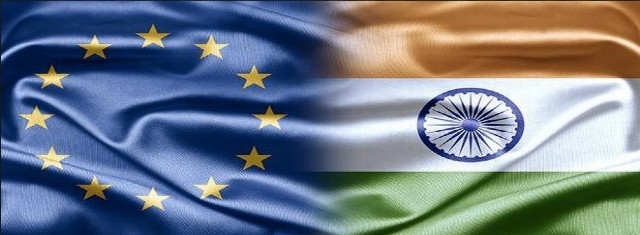News
President von der Leyen in India
Advancing a Strategic Partnership

(Source: European Union)
USPA NEWS -
The European Union and India will strengthen their partnership and deepen bilateral cooperation with a focus on upholding the rules-based global order, supporting economic recovery, fighting climate change and charting the digital transition. This was confirmed during the visit by the President of the European Commission Ursula von der Leyen to New Delhi on Sunday and Monday, where she met the President of India, Ram Nath Kovind, and held wide-ranging talks with Prime Minister Narendra Modi.
President von der Leyen and Prime Minister Narendra Modi agreed to establish a joint Trade and Technology Council to tackle key trade, economic and technology challenges, and advance cooperation in these areas.
They also agreed to resume negotiations for an EU-India Free Trade Agreement and to start talks on an Investment Protection Agreement as well as on an Agreement on Geographical Indications. The first round of negotiations will take place in June.
They also agreed to resume negotiations for an EU-India Free Trade Agreement and to start talks on an Investment Protection Agreement as well as on an Agreement on Geographical Indications. The first round of negotiations will take place in June.
“Today, we are taking steps to deepen our strategic ties with India – on trade, trusted-technology and security, notably in respect of challenges posed by rival governance models. This will help us diversify and secure our supply chains, boost economic opportunities for our businesses, and bring significant benefits to our citizens”, President von der Leyen said, noting that the common objective is to conclude all three agreements swiftly.
India is a key strategic partner for the European Union. The EU is India's third largest trading partner and second largest export destination. It is also one of the largest investors in India, but as President von der Leyen pointed out, there remains a lot of untapped potential.
The EU's Global Gateway strategy opens new opportunities for cooperation and investments in secure and sustainable infrastructure in India and in the region.
The EU's Global Gateway strategy opens new opportunities for cooperation and investments in secure and sustainable infrastructure in India and in the region.
Given their size, economic performance and energy needs, India and the European Union are key in the transition to a more sustainable and green future. President von der Leyen proposed stepping up cooperation to reach ambitious decarbonisation targets, with more intense joint efforts on solar energy and further the cooperation on green hydrogen in particular.
President von der Leyen visited the headquarters of International Solar Alliance, one of India's flagship initiatives to fight the climate change, and met with CEOs from Indian and European energy companies.
President von der Leyen visited the headquarters of International Solar Alliance, one of India's flagship initiatives to fight the climate change, and met with CEOs from Indian and European energy companies.
She said: “We are closely aligned with India in the fight against climate change. The solar energy will play a decisive role to reach our objectives on the way to net zero, both in India and in Europe. Investment here also becomes an investment in our security. Every kilowatt we generate from solar, wind, hydropower or biomass, reduces our dependency on fossil fuels from abroad.”
The President also visited the Energy and Resources Institute (TERI), where she met young students and climate activists and visited the TERI-Deakin Nano-Biotechnology Centre, and she met Indian women leaders and entrepreneurs.
The President also visited the Energy and Resources Institute (TERI), where she met young students and climate activists and visited the TERI-Deakin Nano-Biotechnology Centre, and she met Indian women leaders and entrepreneurs.
Geopolitical conference Raisina Dialogue
President von der Leyen delivered the opening speech at this year's edition of the geopolitical conference Raisina Dialogue, where she addressed current developments, from the aftermath of the COVID-19 pandemic, clean energy and digital transitions, China and in particular the Russian aggression against Ukraine and its global impact.
She said: “The outcome of Putin's war will not only determine the future of Europe but also deeply affect the Indo-Pacific region and the rest of the world. For the Indo-Pacific it is as important as for Europe that borders are respected. And that spheres of influence are rejected. We want a positive vision for a peaceful and prosperous Indo-Pacific.”
President von der Leyen delivered the opening speech at this year's edition of the geopolitical conference Raisina Dialogue, where she addressed current developments, from the aftermath of the COVID-19 pandemic, clean energy and digital transitions, China and in particular the Russian aggression against Ukraine and its global impact.
She said: “The outcome of Putin's war will not only determine the future of Europe but also deeply affect the Indo-Pacific region and the rest of the world. For the Indo-Pacific it is as important as for Europe that borders are respected. And that spheres of influence are rejected. We want a positive vision for a peaceful and prosperous Indo-Pacific.”
more information: https://ec.europa.eu/info/index_en
Liability for this article lies with the author, who also holds the copyright. Editorial content from USPA may be quoted on other websites as long as the quote comprises no more than 5% of the entire text, is marked as such and the source is named (via hyperlink).





